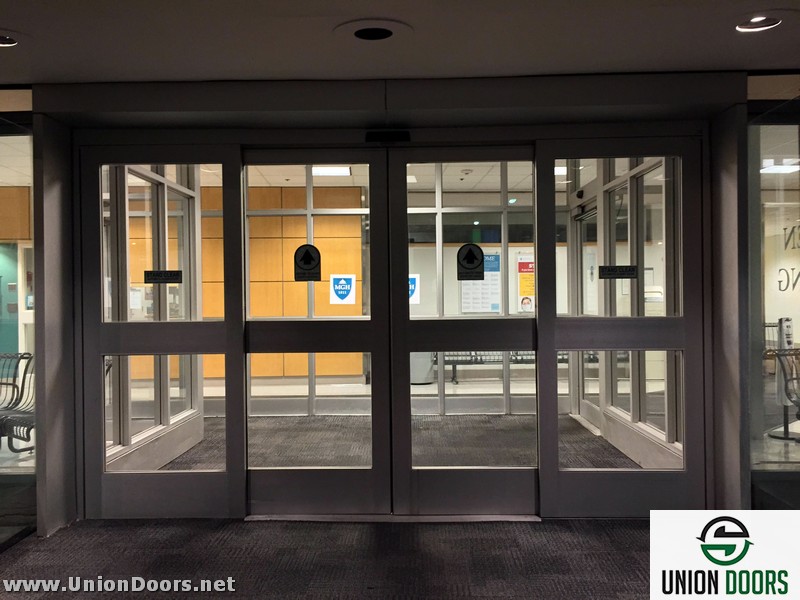

Security Locking systems, ironmongery and hinges should be specified for the expected use and resistance to forced entry.Īutomatic doors come under the Provision and Use of Work Equipment Regulations 1998. BS 6375 is still applicable as a guide to specification for weathertightness. Weathertightness and physical properties of doors are covered in BS EN 14351–1:2006.
#Otomatic doors manual#
Automatic doors and shop entrances may require additional safety measures for people with disabilities or the elderly.įor further guidance go to: Centre for Accessible Environments and BS 8300 for the design of buildings and their approaches for disabled people.Įmergency escape This can be achieved by break-out facility which may be manual or integral to a fire alarm system.
#Otomatic doors full#
A full hazard analysis and risk assessment should be carried out to guidance from HSE Code of Practice L21 and BS 5304 for safe use of machinery.Īccessibility Disability Discrimination Act applies.

Safety BS 7036 considers issues such as signage, finger trapping and tripping risk, inclusion of protective barriers, proper operation of safety devices, activation, opening forces and opening times as well as the condition of operating devices and the door. Insulating glass units to BS EN 1279 may be used for improved thermal performance. BS 6206 for impact performance of safety glass describes three categories: Class A is the most resistant to impact.
#Otomatic doors iso#
Typically toughened glass to BS EN 12150 or laminated safety glass to BS EN ISO 12543.

Safety glass is used in framed or frameless doors. In a retail environment the door leaf life expectancy is more likely to be related to appearance than physical functionality. Life depends on exposure to coastal, polluted or industrial environments, aspect and orientation, as well as coating thickness. Anodising is to BS 3987, minimum 25 microns thick, for an expected service life of 30-plus years.ĭecorative coatings for both aluminium and steel include PVC plastisol (10-30 years), polyvinylidene fluoride PVF2 minimum 25 microns thick (10-20 years), polyester (five-10 years), polyurethane (10–15 years). Timber-framed glass doors are also available.Īluminium may be mill finished. Typically aluminium, stainless steel or decorated galvanised steel is used. Additional safety devices are required for revolving doors with an internal diameter greater than 3m.Īutomatic doors for retail use are constructed from glass or metal-framed glass. Revolving door BS 7036–5 gives guidance on maximum revolving speed. The door opens with a combined sliding and swing action. See BS 7036–2 for avoidance of body traps.īalanced door For use where space is restricted. Sliding or folding door The door leaf of sliding doors may be straight or curved, these slide horizontally across the opening. Commonly provided as a low energy swing door (BS 7036–4) powered so that users are unlikely to be harmed if struck by the door. Swing door Just like a normal hinged door but automatically operated. Control systems have lifetimes of between 10 and 20 years. Where power supply fails doors operate manually. Operator devices which move the door are typically electrical motor driven, pneumatic or hydraulic. Positioning of the sensors is critical for effective operation. Guidance on the specification, design, installation, operation and maintenance of automatic doors for safety, is provided by BS 7036, which comprises five standards.Īutomatic doors are operated by some form of presence-sensing device.


 0 kommentar(er)
0 kommentar(er)
